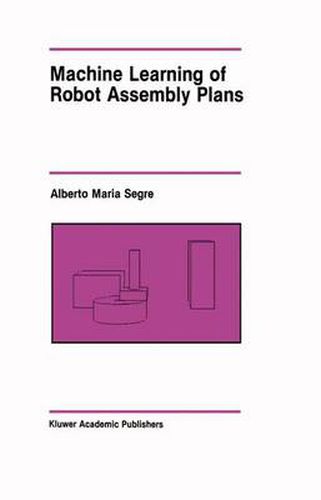Readings Newsletter
Become a Readings Member to make your shopping experience even easier.
Sign in or sign up for free!
You’re not far away from qualifying for FREE standard shipping within Australia
You’ve qualified for FREE standard shipping within Australia
The cart is loading…






This title is printed to order. This book may have been self-published. If so, we cannot guarantee the quality of the content. In the main most books will have gone through the editing process however some may not. We therefore suggest that you be aware of this before ordering this book. If in doubt check either the author or publisher’s details as we are unable to accept any returns unless they are faulty. Please contact us if you have any questions.
The study of artificial intelligence (AI) is indeed a strange pursuit. Unlike most other disciplines, few AI researchers even agree on a mutually acceptable definition of their chosen field of study. Some see AI as a sub field of computer science, others see AI as a computationally oriented branch of psychology or linguistics, while still others see it as a bag of tricks to be applied to an entire spectrum of diverse domains. This lack of unified purpose among the AI community makes this a very exciting time for AI research: new and diverse projects are springing up literally every day. As one might imagine, however, this diversity also leads to genuine difficulties in assessing the significance and validity of AI research. These difficulties are an indication that AI has not yet matured as a science: it is still at the point where people are attempting to lay down (hopefully sound) foundations. Ritchie and Hanna [1] posit the following categorization as an aid in assessing the validity of an AI research endeavor: (1) The project could introduce, in outline, a novel (or partly novel) idea or set of ideas. (2) The project could elaborate the details of some approach. Starting with the kind of idea in (1), the research could criticize it or fill in further details (3) The project could be an AI experiment, where a theory as in (1) and (2) is applied to some domain. Such experiments are usually computer programs that implement a particular theory.
$9.00 standard shipping within Australia
FREE standard shipping within Australia for orders over $100.00
Express & International shipping calculated at checkout
This title is printed to order. This book may have been self-published. If so, we cannot guarantee the quality of the content. In the main most books will have gone through the editing process however some may not. We therefore suggest that you be aware of this before ordering this book. If in doubt check either the author or publisher’s details as we are unable to accept any returns unless they are faulty. Please contact us if you have any questions.
The study of artificial intelligence (AI) is indeed a strange pursuit. Unlike most other disciplines, few AI researchers even agree on a mutually acceptable definition of their chosen field of study. Some see AI as a sub field of computer science, others see AI as a computationally oriented branch of psychology or linguistics, while still others see it as a bag of tricks to be applied to an entire spectrum of diverse domains. This lack of unified purpose among the AI community makes this a very exciting time for AI research: new and diverse projects are springing up literally every day. As one might imagine, however, this diversity also leads to genuine difficulties in assessing the significance and validity of AI research. These difficulties are an indication that AI has not yet matured as a science: it is still at the point where people are attempting to lay down (hopefully sound) foundations. Ritchie and Hanna [1] posit the following categorization as an aid in assessing the validity of an AI research endeavor: (1) The project could introduce, in outline, a novel (or partly novel) idea or set of ideas. (2) The project could elaborate the details of some approach. Starting with the kind of idea in (1), the research could criticize it or fill in further details (3) The project could be an AI experiment, where a theory as in (1) and (2) is applied to some domain. Such experiments are usually computer programs that implement a particular theory.